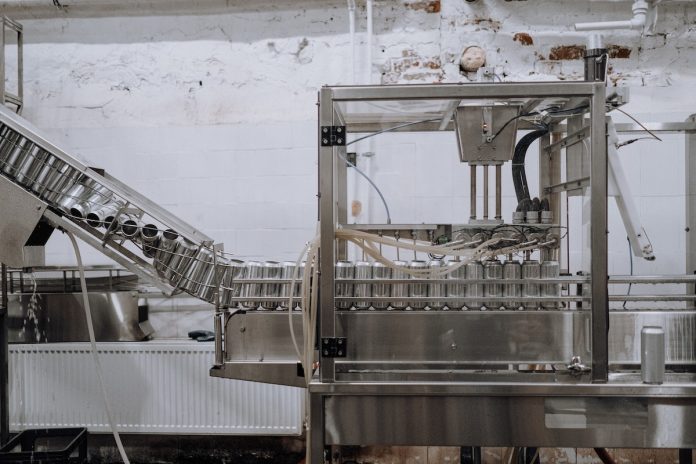The industrial sector is constantly striving to improve its operational efficiency by enhancing its manufacturing and production processes. This can be achieved through the use of process control products, which are designed to monitor, regulate and optimize various aspects of industrial operations. These products have evolved significantly over the years and are now equipped with advanced technologies that provide real-time monitoring, data analytics, and performance insights.
One of the key benefits of using process control products is their ability to provide real-time monitoring and adjustment capabilities. Sensors and controllers can be used to detect changes in temperature, pressure, flow rates, or other critical parameters within a manufacturing process. They can alert operators when deviations from pre-set limits occur, allowing for quick adjustments to be made before any significant damage occurs. This level of precision enables companies to increase productivity while minimizing costly downtime due to equipment failures or malfunctions.
Benefits of Process Control Products for Industrial Operations
The use of specialized equipment designed to monitor and regulate various aspects of production can lead to significant improvements in efficiency, quality, and safety within industrial operations. Process control products are an example of such equipment that can contribute to the optimization of industrial processes. By monitoring factors like temperature, pressure, flow rate, and chemical composition, these products enable real-time adjustments to be made to ensure optimal performance.
Increased productivity is one of the most significant benefits that process control products offer. With sensors able to detect minute changes in inputs or outputs during the production process, operators can identify potential problems early on and take corrective action before they escalate into major issues. This leads to less downtime and fewer delays as well as a reduction in waste or defects. Additionally, cost savings through process control products are achieved by reducing energy consumption through more efficient use of resources such as water or electricity. Overall, process control products have become essential tools for manufacturers seeking to improve their operations’ output while minimizing costs.
Real-time Monitoring and Adjustment with Sensors and Controllers
Utilizing sensors and controllers for real-time monitoring and adjustment in a production line is analogous to having a skilled conductor leading an orchestra, ensuring that each instrument plays in harmony and the overall performance meets the desired standards. These process control products make it possible to monitor key parameters of industrial processes such as temperature, pressure, flow rate, and pH level with utmost precision. The data collected by the sensors are transmitted wirelessly to a central control system where algorithms analyze the information in real time. If there is any deviation from the set threshold values, corrective actions can be initiated without delay. This approach has proven effective in reducing inefficiencies, minimizing waste, maximizing productivity, and improving product quality.
Moreover, predictive maintenance through sensor-based monitoring enables operators to anticipate equipment failures before they occur by identifying patterns of abnormal behavior. This method helps avoid costly downtime that arises from unexpected breakdowns or repairs. As part of Industry 4.0 initiatives that seek to improve manufacturing efficiency through automation and digitization of processes, process control products have become essential tools for achieving these objectives. With wireless communication technology becoming more reliable and affordable than ever before, industrial enterprises can integrate smart sensors into their operations seamlessly while enhancing safety measures for workers on-site. In conclusion, utilizing sensors and controllers for real-time monitoring and adjustment allows industries to optimize their operations by providing accurate data analysis while preventing potential faults in the production line through predictive maintenance techniques.
Insights into Process Performance with Software and Analytics
Insights into process performance can be gained through the use of software and analytics, providing industrial enterprises with valuable data-driven solutions to enhance production efficiency. Predictive maintenance is one of the main applications of process control products that utilize software and analytics. By analyzing data from sensors and controllers, machine learning algorithms can identify patterns that indicate potential equipment failures before they occur. This allows for preemptive repairs or replacements, reducing downtime and preventing costly breakdowns.
Additionally, software and analytics can provide real-time monitoring of operations, allowing for adjustments to be made as needed. This ensures that processes are operating at optimal levels and that any deviations from the expected performance are quickly identified and addressed. Data analysis can also reveal areas where improvements can be made to further optimize production efficiency. By having a comprehensive understanding of process performance through the use of software and analytics, industrial enterprises can make informed decisions about their operations, resulting in increased productivity, reduced costs, improved quality control, and ultimately greater profitability.
Latest Advancements in Process Control Products for Increased Efficiency
Recent developments in software and analytics have revolutionized the way in which production efficiency is improved, providing a compelling solution for enterprises seeking to maximize their profitability by harnessing the power of data-driven process control. The latest advancements in process control products offer new opportunities to optimize industrial processes through remote access and predictive maintenance.
Remote access allows operators to monitor and control industrial processes from anywhere at any time. With remote access, engineers can adjust parameters or troubleshoot issues without being physically present on the factory floor. This not only increases operational flexibility but also reduces downtime caused by machinery failures. Predictive maintenance technology uses real-time data to predict when equipment will require servicing. By identifying potential problems before they occur, enterprises can minimize unplanned downtime and reduce maintenance costs. These technologies help enterprises stay competitive by improving productivity and reducing expenses while optimizing industrial processes for maximum efficiency.
Frequently Asked Questions
When choosing process control products for industrial operations, compatibility, and cost-effectiveness are key considerations. Compatibility refers to the ability of the product to integrate with existing systems and equipment, minimizing disruptions during implementation. The product must be able to communicate with other devices in real time and provide accurate data for analysis. Cost-effectiveness, on the other hand, requires a thorough evaluation of the total cost of ownership, including purchase price, installation costs, maintenance fees, and energy consumption over time. A product that may seem cheaper initially may prove more expensive in the long run due to high maintenance costs or low reliability. Therefore, it is crucial to select process control products that strike a balance between compatibility and cost-effectiveness while meeting the specific needs of your industrial operation.
When comparing process control products to traditional methods of industrial process management, it is important to consider their effectiveness. While traditional methods rely on manual labor and human decision-making, process control products offer automation and optimization in industrial processes. Process control products have proven to be more effective than traditional methods in terms of accuracy, speed, and efficiency. They allow for real-time monitoring and adjustments to the manufacturing process, ensuring consistent product quality while reducing waste and downtime. In contrast, traditional methods can be prone to errors due to human factors such as fatigue or distraction. The use of process control products has become increasingly popular as industries seek ways to improve productivity and reduce costs.
When implementing process control products in industrial operations, there are various challenges that need to be addressed. One of the major implementation challenges is the lack of expertise and knowledge among operators and technicians who are responsible for using these products. Additionally, product selection factors such as cost, compatibility with existing systems, and reliability also pose significant challenges to successful implementation. To overcome these obstacles, companies should invest in training programs for their employees to enhance their skills and knowledge about process control products. They should also conduct thorough research on different product options before making any purchase decisions to ensure they select the most appropriate product for their specific needs.
Integration compatibility is a crucial factor to consider when implementing process control products in existing industrial systems and equipment. The seamless integration of these products with the existing systems can significantly reduce costs and improve overall efficiency. However, it is essential to ensure that the equipment is compatible with the new technology before installing any process control products. Compatibility issues can lead to additional expenses and delays in the implementation process, which may affect productivity levels. Therefore, it is necessary to carefully evaluate the compatibility of existing systems before making any decisions regarding integration with process control products. Ultimately, considering cost-effectiveness and compatibility are critical for the successful integration of process control products into industrial operations.
Potential drawbacks and safety considerations are important factors to consider when implementing process control products in industrial processes. While these products can optimize operations and improve efficiency, they also come with potential risks. One of the main limitations is the possibility of system failures or malfunctions that could result in costly downtime or even endanger workers. Additionally, there may be a learning curve for personnel who need to operate and maintain these systems effectively. It is crucial for companies to thoroughly evaluate the benefits and potential drawbacks associated with process control products before integrating them into existing industrial systems and equipment. Adequate training, maintenance, and safety protocols must also be put in place to ensure safe use and maximum effectiveness.
Conclusion
In conclusion, implementing process control products in industrial operations can lead to improved efficiency, higher productivity, and increased profitability. Real-time monitoring and adjustment using sensors and controllers allow for quick response times to any deviations from optimal performance. With the insights provided by software and analytics, businesses gain a better understanding of their processes and can make data-driven decisions to optimize them.
The latest advancements in process control products have further enhanced their ability to optimize industrial processes. From remote monitoring capabilities to artificial intelligence algorithms that learn from past performance data, these tools are becoming more sophisticated and powerful than ever before. As the adage goes, “time is money,” and investing in process control products saves both by reducing downtime, minimizing waste, and increasing overall efficiency.
Overall, incorporating process control products into industrial operations should be a priority for businesses looking to improve their bottom line while maintaining high standards of quality. The benefits are clear: real-time monitoring enables quick responses to deviations from optimal performance; analytics provide insights into areas where improvements could be made; and with the latest advancements in technology like AI algorithms that learn from past data inputs or remote monitoring capabilities – there’s no end in sight for how much these tools will continue improving over time!













